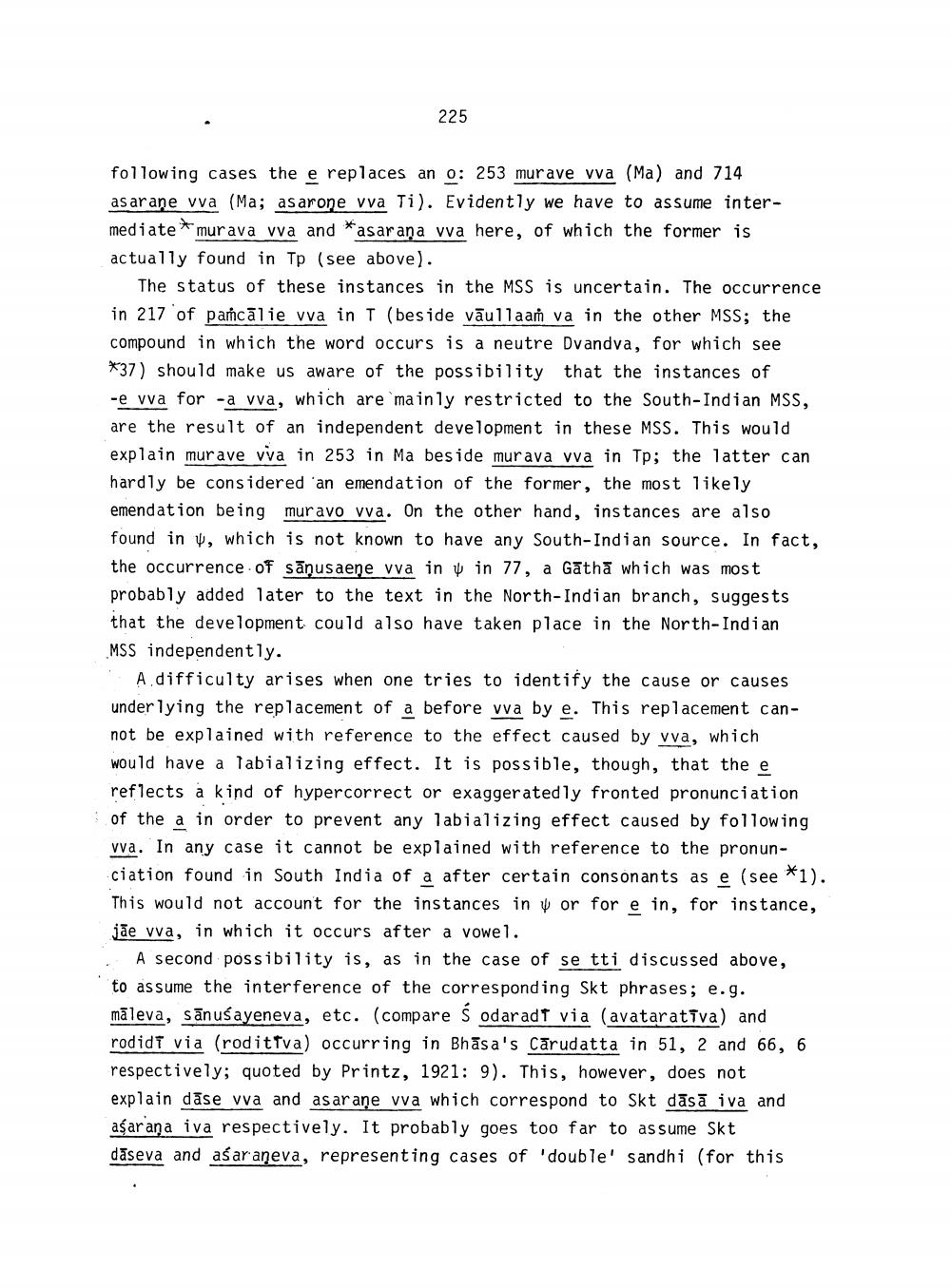________________
225
following cases the e replaces an o: 253 murave va (Ma) and 714 asarane vva (Ma; asarone vva Ti). Evidently we have to assume intermediate* murava va and *asar ana wa here, of which the former is actually found in Tp (see above).
The status of these instances in the MSS is uncertain. The occurrence in 217 of pascālie vva in T (beside vāullaaṁ va in the other MSS; the compound in which the word occurs is a neutre Dvandva, for which see *37) should make us aware of the possibility that the instances of -e vva for -a va, which are mainly restricted to the South-Indian MSS, are the result of an independent development in these MSS. This would explain murave vva in 253 in Ma beside murava va in Tp; the latter can hardly be considered 'an emendation of the former, the most likely emendation being muravo va. On the other hand, instances are also found in y, which is not known to have any South-Indian source. In fact, the occurrence of sāņusaene vva in u in 77, a Gathā which was most probably added later to the text in the North-Indian branch, suggests that the development could also have taken place in the North-Indian MSS independently.
A difficulty arises when one tries to identify the cause or causes underlying the replacement of a before va by e. This replacement cannot be explained with reference to the effect caused by vva, which would have a labializing effect. It is possible, though, that the e reflects a kind of hypercorrect or exaggeratedly fronted pronunciation of the a in order to prevent any labializing effect caused by following wa. In any case it cannot be explained with reference to the pronunciation found in South India of a after certain consonants as e (see *1). This would not account for the instances in v or for e in, for instance, jāe va, in which it occurs after a vowel.
A second possibility is, as in the case of setti discussed above, to assume the interference of the corresponding Skt phrases; e.g. māleva, sānus ayeneva, etc. (compare s odaradt via (avatarattva) and rodidi via (roditfva) occurring in Bhāsa's Cārudatta in 51, 2 and 66, 6 respectively; quoted by Printz, 1921: 9). This, however, does not explain dāse va and asar ane wa which correspond to Skt dāsā iva and ašarana iva respectively. It probably goes too far to assume Skt dāseva and aśaraneva, representing cases of 'double' sandhi (for this




